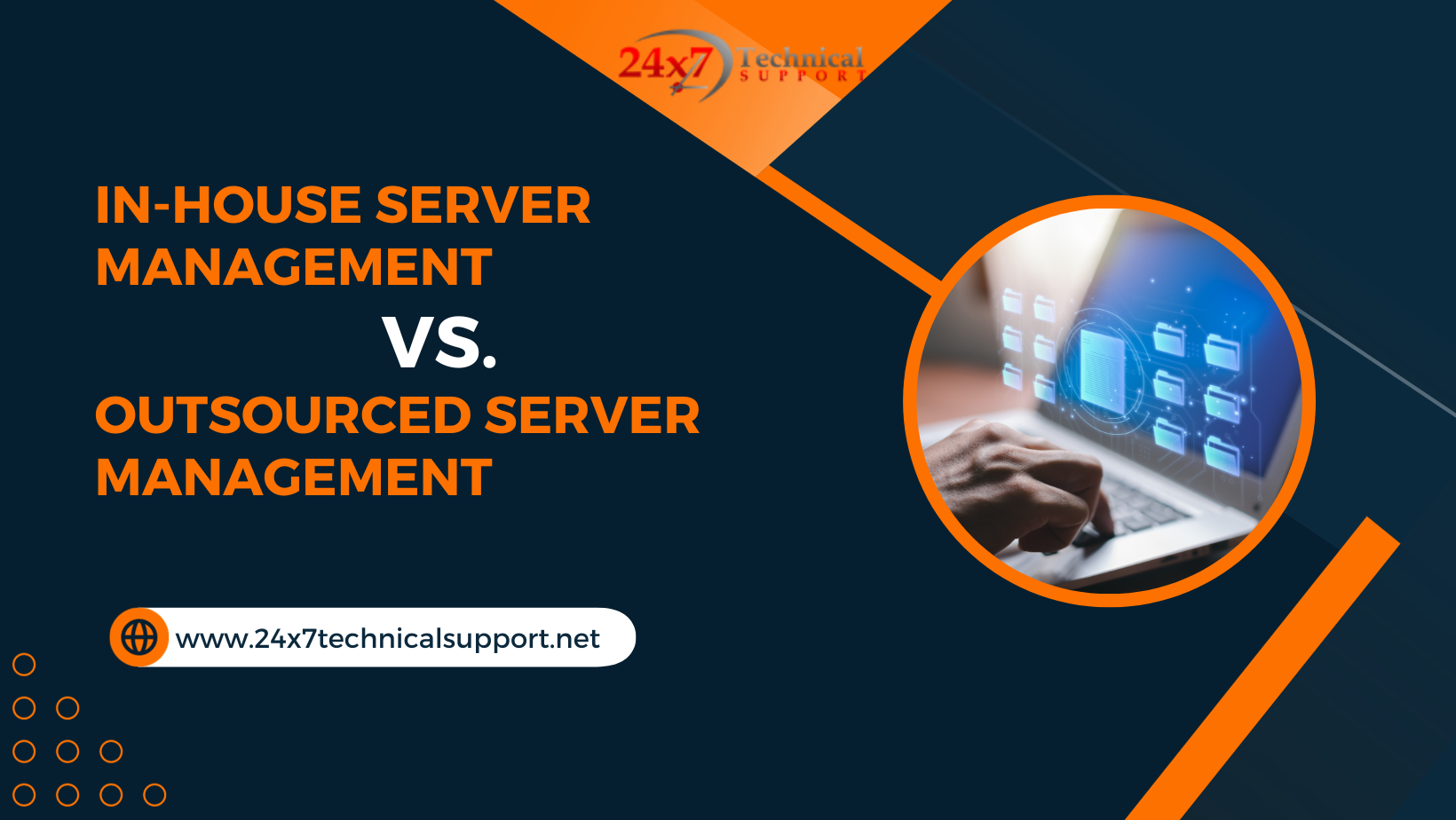
In today’s rapidly evolving technological landscape, effective server management is crucial for businesses to ensure seamless operations and data security. When it comes to managing servers, organizations often face the dilemma of choosing between in-house server management and outsourcing this critical task to external experts. In this article, we will conduct a comprehensive cost analysis, comparing the financial implications of in-house server management versus outsourced server management.

Introduction
Server management involves the planning, deployment, and maintenance of servers to optimize performance and ensure data integrity. Efficient server management is the backbone of a robust IT infrastructure, impacting an organization’s overall productivity and competitiveness.
In-House Server Management
In-house server management refers to the practice of maintaining servers within the organization’s physical premises. While it provides a sense of control, it comes with its own set of challenges.
Advantages and Disadvantages
Advantages
- Direct control over server infrastructure.
- Immediate response to issues.
Disadvantages
- High initial setup costs.
- Limited scalability.
Cost Considerations
In-house server management incurs substantial costs in terms of hardware, software, and personnel. The initial investment can be overwhelming, and ongoing operational expenses can strain the organization’s budget.
Outsourced Server Management
Outsourced server management involves delegating server-related tasks to external service providers. This approach offers several benefits, but it’s essential to weigh the costs carefully.
Advantages and Disadvantages
Advantages
- Cost-effective scalability.
- Access to specialized expertise.
Disadvantages
- Limited control over physical servers.
- Dependency on external service providers.
Cost Considerations
While outsourced server management may seem more cost-effective initially, organizations must evaluate the long-term financial implications, including subscription fees and potential hidden costs.

Initial Setup Costs
In-House Server Setup Costs
Setting up an in-house server infrastructure requires significant capital investment in servers, networking equipment, and software licenses. Additionally, hiring and training personnel contribute to the upfront expenses.
Outsourced Server Setup Costs
Outsourcing eliminates the need for substantial initial investments, as external providers bear the infrastructure and personnel costs. However, organizations must carefully assess service-level agreements and subscription fees.
Operational Costs
In-House Operational Expenses
Ongoing operational costs for in-house server management include electricity, cooling, maintenance, and personnel salaries. These costs can accumulate, impacting the overall budget.
Outsourced Operational Expenses
Outsourced server management typically involves predictable subscription fees. While this may appear cost-effective, organizations should consider the cumulative expenses over time.
Scalability
In-House Scalability Challenges
Scaling an in-house server infrastructure can be challenging, requiring additional investments in hardware and personnel. This lack of flexibility may hinder rapid business growth.
Outsourced Scalability Benefits
Outsourcing allows organizations to scale server resources as needed, with providers offering flexible subscription plans. This scalability aligns with business growth without incurring substantial upfront costs.
Expertise and Skillsets
In-House Expertise Requirements
Maintaining an in-house server infrastructure demands a skilled IT team. Recruiting and retaining personnel with the necessary expertise can be competitive and costly.
Outsourced Expertise Availability
Outsourced server management provides access to a pool of specialized professionals. This ensures that organizations benefit from up-to-date expertise without the burden of individual employee training.
Security Measures
In-House Security Considerations
Securing in-house servers is a constant challenge, requiring organizations to invest in robust cybersecurity measures. The risk of data breaches and cyberattacks remains a significant concern.
Outsourced Security Measures
Outsourced providers prioritize security, implementing advanced measures to protect client data. Regular updates and monitoring contribute to a more secure server environment.
Downtime and Reliability
In-House Downtime Factors
In-house server management may experience downtime due to hardware failures, maintenance, or unforeseen issues. This can disrupt business operations and impact customer satisfaction.
Outsourced Reliability Factors
Outsourced management often includes service level agreements (SLAs) guaranteeing high reliability. Providers focus on minimizing downtime and ensuring consistent server performance.

Monitoring and Maintenance
In-House Monitoring and Maintenance Challenges
Continuous monitoring and proactive maintenance of in-house servers require significant resources. Failure to address issues promptly can result in system failures and data loss.
Outsourced Monitoring and Maintenance Benefits
Outsourced providers offer 24/7 monitoring and maintenance, reducing the burden on internal teams. This proactive approach enhances overall server reliability.
Customization and Flexibility
In-House Customization Capabilities
In-house management allows for customization according to specific organizational needs. However, this customization may come at the expense of scalability.
Outsourced Flexibility Advantages
Outsourcing provides a balance between customization and flexibility. Organizations can choose from a range of services and configurations, adjusting resources as needed.
Data Backup and Recovery
In-House Backup and Recovery Processes
Implementing robust backup and recovery processes in-house is essential for data protection. However, it requires substantial investments in backup solutions and redundancy.
Outsourced Data Protection Measures
Outsourced management includes reliable data backup and recovery processes. This ensures data integrity and reduces the risk of permanent data loss.
Regulatory Compliance
In-House Compliance Challenges
Meeting regulatory compliance standards can be challenging for in-house server management. Organizations must stay updated on changing regulations, which may require additional investments.
Outsourced Compliance Support
Outsourced providers often specialize in maintaining compliance, helping organizations adhere to industry-specific regulations. This can reduce the risk of legal consequences.
Conclusion
In conclusion, the choice between in-house and outsourced server management depends on various factors, including budget, scalability requirements, and the need for specialized expertise. While in-house solutions offer control, outsourcing provides cost-effective scalability and access to cutting-edge skills. Organizations must conduct a thorough cost analysis and assess their unique needs before making a decision.
FAQs
- Is in-house server management more secure than outsourcing?
- The security of in-house servers depends on robust cybersecurity measures. Outsourced providers, however, often specialize in security, implementing advanced measures.
- What factors should I consider when evaluating scalability?
- Scalability considerations include the potential for business growth, the flexibility of resources, and the ability to adapt to changing demands.
- How can outsourcing server management contribute to cost savings?
- Outsourcing eliminates substantial upfront costs, offers predictable subscription fees, and allows organizations to scale resources as needed.
- What is the role of regulatory compliance in server management decisions?
- Regulatory compliance is crucial, especially for industries with specific data protection requirements. Outsourced providers often specialize in maintaining compliance.
- Can in-house server management accommodate rapid business growth?
- In-house scalability may pose challenges due to the need for additional investments in hardware and personnel. Outsourcing provides a more flexible and cost-effective solution.